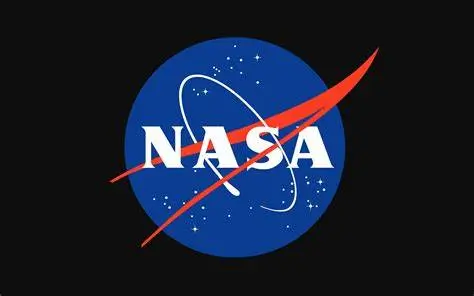| In this week’s newsletter, discover a pair of monster black holes disrupting a cloud of gas in the center of a galaxy; explore the new research analyzing data collected during the Voyager 2 flyby of Uranus 38 years ago; and fly into the eye of the storm with hurricane hunter pilots in the latest episode of NASA’s Curious Universe podcast. Plus, more stories you might have missed. |
| THE UNIVERSE Gas-Churning Monster Black Holes  |
| Scientists using observations from NASA’s Neil Gehrels Swift Observatory have discovered, for the first time, the signal from a pair of monster black holes disrupting a cloud of gas in the center of a galaxy. The dual black holes are in the center of a galaxy 1 billion light-years away in the northern constellation Cygnus. The pair are about 16 billion miles apart, close enough that light only takes a day to travel between them. Together, they contain 40 million times the Sun’s mass. Scientists estimate the black holes complete an orbit every 130 days and will collide and merge in approximately 70,000 years. LEARN MORE |
 | THE UNIVERSE A Black Hole’s “Feast” Using data from NASA’s James Webb Space Telescope and Chandra X-ray Observatory, a team of astronomers discovered a rapidly feeding black hole at the center of a dwarf galaxy in the early universe. While short-lived, this black hole’s “feast” could help astronomers explain how supermassive black holes grew so quickly in the early universe. LEARN MORE |
| THE SOLAR SYSTEM Solving Uranus Mysteries When the Voyager 2 spacecraft flew by Uranus in 1986, it provided scientists’ first—and, so far, only—close glimpse of this strange, sideways-rotating outer planet. Alongside the discovery of new moons and rings, baffling new mysteries confronted scientists. Now, new research analyzing the data collected during that flyby 38 years ago is helping solve several of these Uranus mysteries. LEARN MORE |  |
 THE SOLAR SYSTEM A Story of Survival The Large Magellanic Cloud, or LMC, is one of the Milky Way galaxy’s nearest neighbors, and now, for the first time, astronomers have been able to measure the size of the LMC’s halo—something they could only do with the Hubble Space Telescope. Researchers were surprised to find that it is only about 50,000 light-years across—that’s approximately 10 times smaller than halos of other galaxies that are similar in mass. Its compactness tells the story of its encounter with the Milky Way. LEARN MORE |  MISSIONS Roman’s Optical Telescope Assembly Complete The Nancy Grace Roman Space Telescope has received its final major delivery: the Optical Telescope Assembly, which includes a 7.9-foot primary mirror, nine additional mirrors, and supporting structures and electronics. The telescope will focus cosmic light and send it to Roman’s instruments, revealing many billions of objects strewn throughout space and time. LEARN MORE |
| More NASA News |
 | A science antenna developed with support from NASA’s Earth Science Technology Office is now in low-Earth orbit aboard MuSat2, a commercial remote-sensing satellite. The dual-frequency antenna will help measure ocean surface wind speed—an essential data point for scientists trying to forecast how severe a burgeoning hurricane will become. |
 | Earth’s oceans are rising, disrupting coastal communities around the globe. Agencies and organizations are working to prepare people as their world changes around them, and NASA information is helping these efforts. |
 | Fly into the eye of the storm with hurricane hunter pilots and meet the meteorologists and data scientists building AI models to improve hurricane prediction in the latest episode of NASA’s Curious Universe podcast. |
 | Following a signing ceremony Wednesday, Nov. 13, in Denmark’s capital city, Copenhagen, NASA welcomed Denmark as the 48th nation to commit to the safe and responsible exploration of space that benefits humanity. |
 | The twin spacecraft of NASA’s TRACERS (Tandem Reconnection and Cusp Electrodynamics Reconnaissance Satellites) mission—satellites that will study how the solar wind interacts with Earth’s magnetosphere—were recently completed in preparation for a 2025 launch. The mission will help answer key questions about how the Sun influences Earth, and ultimately drives space weather that impacts technology and communications. |
| Do You Know? |
 |
| This week, we’re remembering the second mission to put astronauts on the surface of the Moon, Apollo 12. On Nov. 19, 1969, Pete Conrad and Al Bean achieved a pinpoint landing on the Moon, setting the Apollo 12 lunar module “Intrepid” down closer to the Surveyor III lander than mission planners expected. |
| How far from Surveyor III did Intrepid land? A. 535 feet B. 857 feet C. 988 feet D. 221 feet |
| Find out the answer in next week’s edition of the NASA newsletter. |
 | Last week we asked which branch of the military claims the most NASA astronauts. The answer? The U.S. Navy, just edging out the U.S. Air Force as the branch of the military contributing the most members to NASA’s astronaut corps. |
 |
| Affirming Native Voices |
| Each November, NASA commemorates National Native American Heritage Month by celebrating the traditions, languages, stories, and cultures of Indigenous peoples who have shaped our country since before its beginning. We are proud to honor Indigenous communities and their contributions to NASA’s mission. PEOPLE OF NASA |
NOTE: This is a NASA outreach publication. Formatted to fit this screen.

Great post! Interesting about the black holes. I was reading somewhere that Webb has shown they are much larger than previously thought. Interesting to consider their “life cycle” wrt galaxies and the cosmos.
BUONA SERATA
Lol I just noticed the year is set to 2025 in the title when it should be 2024. I guess I’ll go fix that now.